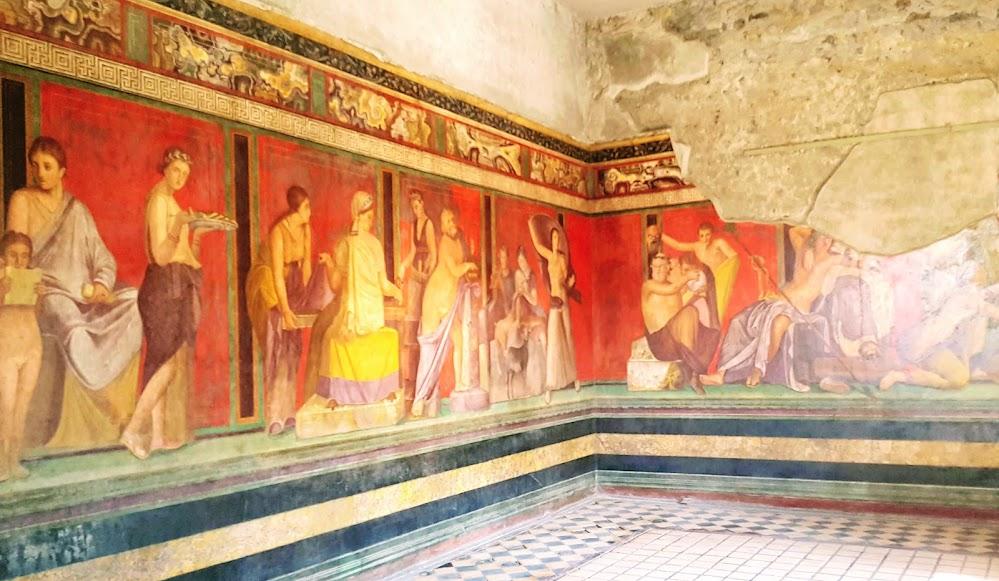Explore the World's Best Ideas
Join today and uncover 100+ curated journeys from 50+ topics. Unlock access to our mobile app with extensive features.
Hospitality Means Hospitium
Pompeii had an incredibly vibrant hospitality scene before she met her end with the eruption of Mount Vesuvius in AD 79. The word "hospitality" comes from the Latin word "hospitium".
2
101 reads
As with most Roman provincial towns, several inns and taverns can be found at the entrance to Pompeii, having provided handy shelter to visiting merchants. Then there are other establishments spread across the town. In total, archaeologists have identified some 160 properties that seem to have been bars and restaurants, in addition to a great many hotels. This relatively large number owed to the fact that many people would not have had access in their homes to the utilities required to prepare food -- from ovens to sinks.
1
25 reads
It's not dissimilar to the circumstances that the dwellers of modern-day Manhattan find themselves in. ... Many of Pompeii's establishments are what we would today call a restaurant with rooms, which the Romans called a hospitium. In various shapes and sizes, there were modest establishments in poorer parts of town that probably had long-term residents who couldn't afford to rent a home, some of which appear to have had enough bedrooms for up to fifty people.
1
17 reads
Then there were: coaching inns (stabula), which were simple bars, sometimes located just outside the metropolis; restaurants known as popina; and the inevitable lupanar (brothels).
Of those eating and drinking establishments, the Inn of Primus was doubtless very popular. Situated on the main drag of Via dell'Abbondanza, it would have attracted a wide clientele from the local businesses and residences that existed at the heart of Pompeii.
1
18 reads
Along that street were found shops and workshops offering anything and everything one could imagine. There were builders' merchants, blacksmiths, iron and bronze dealers, arts and crafts stores, shops selling cloth, olive oil, hardware and tools. There was a wine store, a bakery, a barber shop, as well as a grocer, a fruit store, a bank, several brothels, a laundry and the local public baths. The latter advertised itself as 'elegant baths for the best people,'. ...
1
15 reads
We know which buildings were bakeries, because the vicious discharge of Vesuvius covered, concealed and preserved not just the mills, ovens and loaves, but also the unground wheat kernels. In the olive oil shops, there are traces of oil in the jugs; amphoras are still stacked in the wine shops. In fact, archaeologists claim to have even found evidence of rosemary, garlic, olive oil, cheese and anchovies in the fossilized flatbreads in some of the bakeries.
1
7 reads
Not far from the forum is the sign of a shop belonging to a local baker Podiscus Pricus, in whose building historians say was a wood-fired oven. There were likely other ovens across Pompeii, too similar to a small one found in the Greco-Roman market area of Naples. Some 4 feet in diameter, these ovens would not have been a good shape for bread, but you could bake smaller rounds: in other words, pizza -- that classic Italian street food staple.
1
7 reads
The spirit of some of the Pompeiians who chomped on these pizzas can be seen in the graffiti across town.
On the wall of a bar owned by one Athictus are the words: 'I screwed the barmaid.' A little more poetic and found at the bar of Astylus and Pardalus is: 'Lovers are like bees in that they live a honeyed life.' And at the bar of Innulus and Papilio -- most likely also a brothel -- an individual recorded the occasion of his coming out: 'Weep you girls. My penis has given you up. Now it penetrates men's behind's. Goodby, wondrous femininity!
1
18 reads
IDEAS CURATED BY
Antonio Gallo's ideas are part of this journey:
Learn more about books with this collection
How to write clearly and concisely
How to use proper grammar and punctuation
How to structure a business document
Related collections
Discover Key Ideas from Books on Similar Topics
5 ideas
What was life like in ancient Rome?
bbc.co.uk
4 ideas
"I have no enemies" (Thorfinn - Vinland Saga)
Lessons From Anime
20 ideas
A Tale of Two Cities
Charles Dickens
Read & Learn
20x Faster
without
deepstash
with
deepstash
with
deepstash
Personalized microlearning
—
100+ Learning Journeys
—
Access to 200,000+ ideas
—
Access to the mobile app
—
Unlimited idea saving
—
—
Unlimited history
—
—
Unlimited listening to ideas
—
—
Downloading & offline access
—
—
Supercharge your mind with one idea per day
Enter your email and spend 1 minute every day to learn something new.
I agree to receive email updates
